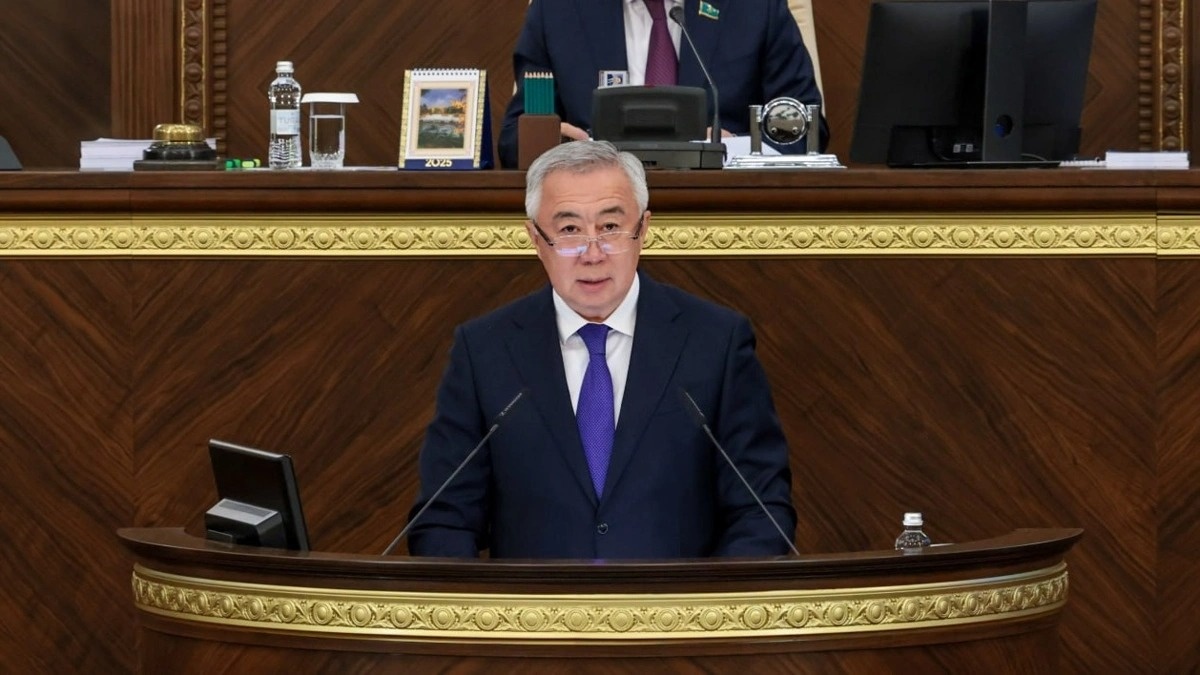Community Engagement and Sustainable Development Report: District 65B
Introduction
This report outlines recent initiatives and community engagements undertaken to advance local economic vitality, social equity, and sustainable community development within St. Paul, in alignment with the United Nations Sustainable Development Goals (SDGs). The activities focus on fostering partnerships, providing essential resources, and promoting inclusive dialogue.
Fostering Economic Growth and Reducing Inequalities (SDG 8, 9, 10)
Small Business Development Forum
A forum was convened with local small business owners to address economic challenges and opportunities. This initiative directly supports SDG 8 (Decent Work and Economic Growth) by engaging with the core drivers of the local economy. The dialogue aimed to create a more inclusive and sustainable economic environment, contributing to SDG 10 (Reduced Inequalities) by ensuring diverse entrepreneurs have a platform for their concerns.
Resource Allocation for Entrepreneurs
To address expressed challenges in accessing support, a list of resources has been compiled and disseminated. This action promotes SDG 9 (Industry, Innovation, and Infrastructure) by providing businesses with the tools necessary for sustainable growth and innovation.
- Small Business Assistance Office (SBAO): A key resource within the Department of Employment and Economic Development (DEED) offering individual consultation and business guidebooks to reduce operational burdens for startups and established companies.
- Monthly Small Business Call: A recurring engagement opportunity for direct interaction with experts and peers, fostering a collaborative business ecosystem.
Strengthening Community Partnerships and Institutions (SDG 11, 16, 17)
Strategic Collaborative Engagements
A series of meetings were held with key community partners to strengthen institutional collaboration, a cornerstone of SDG 17 (Partnerships for the Goals). These partnerships are vital for building sustainable and resilient communities as outlined in SDG 11 (Sustainable Cities and Communities) and fostering effective, accountable institutions under SDG 16 (Peace, Justice, and Strong Institutions).
- Union Gospel Mission Twin Cities: A meeting and tour were conducted to understand and support their essential work, which aligns with SDG 1 (No Poverty) by providing services to vulnerable populations.
- Ramsey County Commissioner Chair Rafael Ortega: A discussion focused on enhancing State-County partnership initiatives to improve service delivery and infrastructure for District 65.
- Ramsey County Young Adult Career Academy (YACA): An engagement with the YACA team to support programs that provide young adults with career opportunities, contributing to SDG 4 (Quality Education) and SDG 8 (Decent Work and Economic Growth).
Promoting Inclusive, Safe, and Sustainable Communities (SDG 10, 11, 16)
Upcoming Public Forums
Two town halls are scheduled to facilitate public discourse on critical community issues, reinforcing the commitment to inclusive decision-making processes (SDG 16).
- West 7th Street Future: A community conversation regarding urban planning and development, directly engaging residents in shaping a sustainable community (SDG 11).
- Student Safety and Support: A discussion addressing the impact of federal immigration policies on students. This forum aims to develop strategies to protect vulnerable youth and ensure an inclusive, safe environment for all, in line with SDG 10 (Reduced Inequalities).
Urban Renewal and Public Space Revitalization
The grand re-opening of Kennedy Park marks a significant investment in public green spaces. This project contributes to SDG 11 by enhancing community access to safe, inclusive, and accessible green areas. The event’s focus on the area’s Hispanic heritage further promotes the goal of building inclusive and culturally vibrant communities.
Future Actions and Commitments
Addressing Food Security (SDG 2)
Future communications will focus on the potential impacts of a government shutdown on the Supplemental Nutrition Assistance Program (SNAP). A comprehensive list of local food resources will be provided to mitigate food insecurity, directly addressing SDG 2 (Zero Hunger).
Ongoing Engagement
Continuous outreach and assistance will be maintained to ensure the office remains an effective and accountable institution (SDG 16), responsive to the needs of the community.
1. Which SDGs are addressed or connected to the issues highlighted in the article?
SDG 8: Decent Work and Economic Growth
- The article heavily focuses on supporting the local economy by providing resources and assistance to small business owners and entrepreneurs. The establishment of a small business forum and the promotion of the Small Business Assistance Office are direct efforts to foster economic growth and support decent job creation.
SDG 11: Sustainable Cities and Communities
- This goal is addressed through multiple community-focused initiatives. The town hall concerning the “future of West 7th Street” points to participatory urban planning. The “Kennedy Park Community Celebration & Grand Re-Opening” highlights the revitalization of inclusive and accessible green public spaces.
SDG 17: Partnerships for the Goals
- The representative emphasizes collaboration throughout the article. Meetings with the Ramsey County Commissioner to strengthen “State partnership initiatives,” discussions with the Union Gospel Mission, and engagement with the Young Adult Career Academy team all exemplify the building of partnerships between state government, local government, and civil society organizations.
SDG 10: Reduced Inequalities
- The article touches upon issues affecting vulnerable and marginalized groups. The town hall on the safety of students, specifically addressing the “impact of increased ICE operations” and issues facing “unaccompanied migrant children,” directly relates to protecting the rights and well-being of migrants and reducing inequality.
SDG 16: Peace, Justice and Strong Institutions
- The representative’s efforts to create accessible and responsive governance are central. Holding town halls, community conversations, and acting as an “advocate” for constituents demonstrates a commitment to building inclusive and participatory institutions. The discussion on student safety in relation to law enforcement (ICE) also connects to themes of justice and security.
SDG 1: No Poverty & SDG 2: Zero Hunger
- These goals are connected through the support for organizations like the Union Gospel Mission, which works with “neighbors in need,” and the explicit promise to address the “looming effects of the Republican-led government shutdown on SNAP benefits” by providing a “comprehensive list of local community resources…to ensure every family has food on the table.”
SDG 4: Quality Education
- This goal is relevant through the engagement with the “Ramsey County Young Adult Career Academy (YACA) team,” which focuses on career readiness for youth. Additionally, the town hall on the “safety of our students” addresses the need for safe and supportive learning environments.
2. What specific targets under those SDGs can be identified based on the article’s content?
SDG 8: Decent Work and Economic Growth
- Target 8.3: “Promote development-oriented policies that support productive activities, decent job creation, entrepreneurship, creativity and innovation, and encourage the formalization and growth of micro-, small- and medium-sized enterprises…” This is directly supported by the promotion of the Small Business Assistance Office, which provides “individual consultation services and a comprehensive series of business guidebooks” to help both startups and established companies.
SDG 11: Sustainable Cities and Communities
- Target 11.7: “By 2030, provide universal access to safe, inclusive and accessible, green and public spaces…” The article’s announcement of the “Kennedy Park Community Celebration & Grand Re-Opening” and the description of the park as “a beloved green space now revitalized for all to enjoy” directly aligns with this target.
- Target 11.3: “By 2030, enhance inclusive and sustainable urbanization and capacity for participatory, integrated and sustainable human settlement planning and management…” The town hall organized to hold a “community conversation concerning the future of West 7th Street in St. Paul” is a clear example of participatory planning for urban development.
SDG 17: Partnerships for the Goals
- Target 17.17: “Encourage and promote effective public, public-private and civil society partnerships…” The article details numerous partnerships, such as the meeting with the Ramsey County Commissioner to discuss “strengthening State partnership initiatives,” the tour with the CEO of the Union Gospel Mission (a civil society organization), and collaborations with colleagues for town halls.
SDG 2: Zero Hunger
- Target 2.1: “By 2030, end hunger and ensure access by all people…to safe, nutritious and sufficient food all year round.” The representative’s commitment to providing a “comprehensive list of local community resources” in response to potential cuts to SNAP benefits is a direct action aimed at ensuring food access for families.
SDG 10: Reduced Inequalities
- Target 10.7: “Facilitate orderly, safe, regular and responsible migration and mobility of people…” The town hall addressing the “impact of increased ICE operations” and the “federal memo regarding financial incentives for unaccompanied migrant children to self-deport” engages directly with the policies affecting the safety and mobility of migrants.
3. Are there any indicators mentioned or implied in the article that can be used to measure progress towards the identified targets?
For Target 8.3 (Support for Small Businesses)
- Implied Indicator: The number of small business owners and entrepreneurs engaged through community forums and utilizing the resources of the Small Business Assistance Office. The article encourages business owners to “apply, reach out to these programs, and keep me updated on the progress of your submission,” implying that engagement and submissions are trackable metrics.
For Target 11.7 (Access to Green Spaces)
- Direct Indicator: The successful completion and re-opening of the Kennedy Park Improvement Project. The “ribbon cutting” and “Grand Re-Opening” event serves as a clear milestone indicating the project’s completion and the space’s availability to the public.
For Target 16.7 (Inclusive Decision-Making)
- Implied Indicator: The number of participatory events (town halls, community conversations) held and the level of resident engagement. The article advertises two upcoming town halls and provides RSVP links, suggesting that attendance and participation can be measured as an indicator of inclusive decision-making processes.
For Target 17.17 (Partnerships)
- Implied Indicator: The number and variety of collaborative meetings and initiatives undertaken with different community stakeholders. The article lists specific meetings with a County Commissioner, a non-profit CEO, and a youth career academy, which can be tracked as evidence of partnership-building.
For Target 2.1 (End Hunger)
- Implied Indicator: The creation and dissemination of a resource list for food assistance. The representative’s promise to “provide a comprehensive list of local community resources” in the next newsletter is a specific, measurable deliverable.
4. Table of SDGs, Targets, and Indicators
| SDGs | Targets | Indicators |
|---|---|---|
| SDG 8: Decent Work and Economic Growth | Target 8.3: Promote development-oriented policies that support entrepreneurship and the growth of micro-, small- and medium-sized enterprises. | Number of small businesses accessing resources from the Small Business Assistance Office; Number of small business forums held. |
| SDG 11: Sustainable Cities and Communities | Target 11.7: Provide universal access to safe, inclusive and accessible, green and public spaces. | Completion of the Kennedy Park Improvement Project and its re-opening to the public. |
| SDG 11: Sustainable Cities and Communities | Target 11.3: Enhance inclusive and sustainable urbanization and capacity for participatory human settlement planning. | Number of community conversations and town halls held on urban development (e.g., future of West 7th Street). |
| SDG 17: Partnerships for the Goals | Target 17.17: Encourage and promote effective public, public-private and civil society partnerships. | Number of collaborative meetings held with state, county, and civil society partners (e.g., Ramsey County Commissioner, Union Gospel Mission). |
| SDG 10: Reduced Inequalities | Target 10.7: Facilitate orderly, safe, regular and responsible migration and mobility of people. | Holding of a community discussion on the impact of ICE operations and policies affecting unaccompanied migrant children. |
| SDG 2: Zero Hunger | Target 2.1: End hunger and ensure access by all people to safe, nutritious and sufficient food. | Creation and distribution of a comprehensive list of local food assistance resources in response to potential SNAP benefit cuts. |
| SDG 16: Peace, Justice and Strong Institutions | Target 16.7: Ensure responsive, inclusive, participatory and representative decision-making at all levels. | Number of town halls and community conversations hosted; Number of residents engaged through these events. |
Source: house.mn.gov







